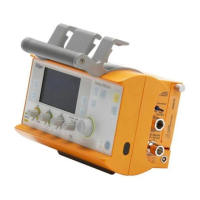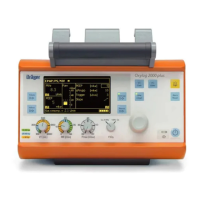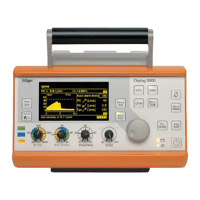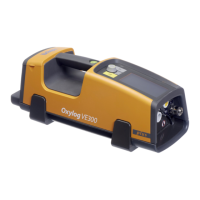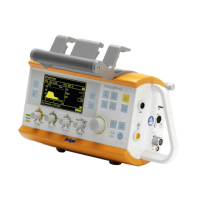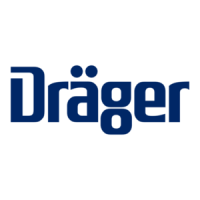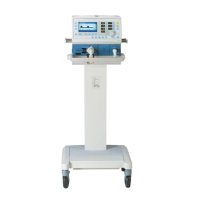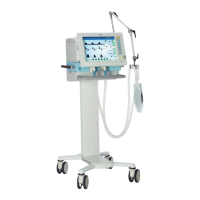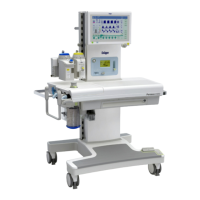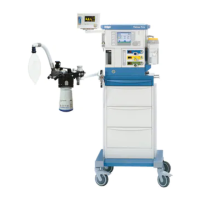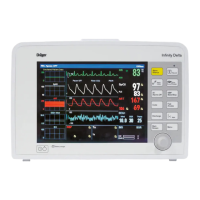Technical Data
Ambient conditions
Operation
Temperature –18 to 50 °C
Atmospheric pressure 600 to 1200 hPa
Humidity 30 to 95 % rel. humidity
Storage
Temperature –18 to 70 °C
Atmospheric pressure 600 to 1200 hPa
Humidity 10 to 95 % rel. humidity
Performance data
Operational parameters
Control principle Volume flow control, time-cycled, volume-constant, flow chopper
(microprocessor-controlled)
Spontaneous breathing with integrated demand valve
(also at PEEP level)
Ventilation modes IPPV/SIPPV, SIMV/CPAP
Ventilation frequency 5 to 40 1/min ±1 1/min,
infinitely variable
Tidal volume VT 0.1 to 1.5 L,
infinitely variable
Setting accuracy for ±10 % of set value, referred to 1013 hPa
10 mbar airway at least 50 mL
pressure
Ventilation time ratio 1 : 3 to 2 : 1 ±5 %,
TI : TE infinitely variable
Inspiratory pressure
limitation Pmax 20 to 60 mbar ±10 %,
infinitely variable;
can also be set to 80 mbar
±10 % or at least ±3 mbar
PEEP (0 +2) to 15 mbar
infinitely variable
Accuracy ±2.0 mbar (measured on the pressure gauge)
Expiratory minute volume MV min. 1.0 L/min
(at TI : TE = 1 : 1.5) max. 25.0 L/min
with effective flow range 4 to 60 L/min
Setting error with ±10 % of set value, referred to 1013 hPa
10 mbar airway pressure (this tolerance span is only used in Air Mix mode.
In No Air Mix mode, the deviations are smaller)
The applied minute volume MV depends on the atmospheric pressure. If the atmospheric pressure falls from
1000 hPa to 900 hPa (corresponding to an altitude of approx. 1000 m), the dosed tidal volume VT increases by
approx. 10 %, because the quantity of gas dosed occupies a larger space at a lower atmospheric pressure.
The increased MV and VT, due to atmospheric pressure changes, are not shown in the display.
43
Technical Data
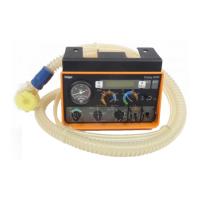
